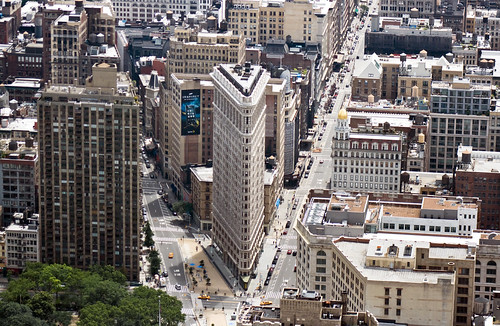
ESPAÑOL
Cliente: George A. Fuller
Arquitecto: D.H. Burnham & Company
Tipo: Rascacielos
Altura: 86.87 metros
Plantas: 21
Uso: Oficinas
Estilo: Bellas Artes
Superficie: 11000 m²
Más conocido mundialmente con el sobrenombre de Edificio Flatiron debido a su característica forma triangular similar a las planchas de la época, en un principio se le puso el nombre oficial de Fuller Building, en honor al Promotor que encargó su construcción, George A. Fuller, quien falleció tristemente dos años antes de terminada la obra en el año 1900. El edificio fue inaugurado en el año 1902 y está considerado como uno de los rascacielos más antiguos de la ciudad de Nueva York. La construcción de este edificio motivó que llegase un nuevo estilo arquitectónico a Nueva York, el Skyscraper (Rascacielos). El famoso edificio fue diseñado por el prestigioso arquitecto de la Escuela de Chicago Daniel Hudson Burham, quien pudo erigir el edificio hasta los casi 87 metros de la época gracias a la estructura de acero interna que lo sostiene. El sistema estructural fue heredado de las construcciones anteriores de rascacielos realizadas en la ciudad de Chicago, sobre todo después del triste incendio de 1871. Gracias a esta estructura de acero se pudo empezar a revestir las fachadas de los edificios con un sistema de muro cortina; este sistema estructural innovador iniciado por la Escuela de Chicago en el último tercio del siglo IXX se está implementando hoy en día en el diseño de numerosos rascacielos y edificios altos de vanguardia. El edificio se encuentra localizado en el 175 de Fifth Avenue (5ª Avenida). La forma triangular del Flatiron Building lo definen la Calle Broadway por el este y la 5ª Avenida por el oeste; la calle 22 por el sur. El acusado vértice de las dos fachadas principales que convergen en una curva deja sólo 2 metros de ancho entre ambas. Estas dos fachadas tienen un ángulo entre ellas de sólo 25 grados.
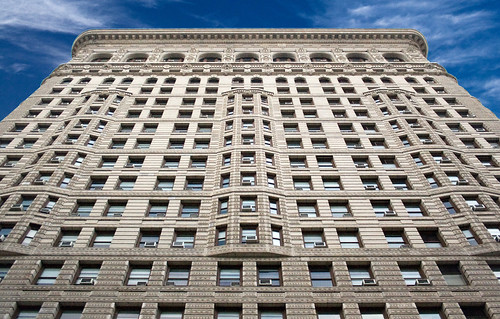
La 5ª Avenida y la Calle Broadway que definen este interesantísimo rascacielos desde el punto de vista estructural y arquitectónico de figura triangular, motivó que a esta zona también se la conociera como la zona de los mirones, ya que después de construido el edificio comenzaron a existir numerosas corrientes de aire que provocaban que se levantasen las faldas de las mujeres que transitaban por las aceras de las inmediaciones. Debido a la fama alcanzada tanto mundialmente como en la propia ciudad de Nueva York, a los alrededores del Edificio Flatiron le han dedicado el nombre de Distrito Flatiron. En los últimos tiempos también se conoce a esta zona como Silicon Alley, ya que son numerosas las empresas informáticas, de internet y de comunicaciones las que se han establecido en esta zona que va desde el propio Distrito Flatiron, hasta el barrio de Soho y TriBeCa. Los materiales empleados en la fachada de estilo Bellas Artes son la piedra caliza combinada con paneles de terra-cotta de diferentes formas almohadilladas. Existen también en las diferentes fachadas varios motivos ornamentales de influencia Renacentista francesa e italiana. El edificio parece evocar la majestuosa figura de una columna clásica griega dividida en tres partes. El Flatiron Building, por su estilo, sus formas y como todo un símbolo indiscutible de la Historia de Nueva York y de los Estados Unidos de Norteamérica, fue declarado Monumento Nacional en el año 1989; el famoso edificio también está inscrito en el Registro Nacional de lugares Históricos desde el año 1979.

ENGLISH
Client: George A. Fuller
Architect: D.H. Burnham & Company
Type: Skyscraper
Height: 86.87 meters
Plants: 21
Use: Offices
Style: Beaux-Arts
Surface: 11000 sq. m.
Best known internationally by his nickname Flatiron Building due to its characteristic triangular shape similar to the plates of the time, initially was given the official name of Fuller Building, after the promoter who commissioned its construction, George A. Fuller, who sadly died two years before building is completed in 1900. The building was opened in 1902 and is considered one of the oldest skyscrapers of New York City. The construction of this building led to a new architectural style came to New York, the Skyscraper. The famous building was designed by renowned architect of the Chicago School Daniel Hudson Burnham, who was able to raise the building up to nearly 87 meters of the season thanks to the internal steel structure that supports it. The structural system was inherited from the previous constructions of skyscrapers made in Chicago, especially after the sad fire of 1871. Thanks to this structure of steel could begin to take the facades of buildings with curtain wall system, this innovative structural system initiated by the Chicago School in the last third of the IXX century is being implemented today in the design of numerous skyscrapers and tall buildings edge. The building is located at 175 Fifth Avenue (5th Avenue). The triangular shape is defined by the Flatiron Building Broadway Street on the east and 5th Avenue on the west, 22nd Street to the south. The defendant vertex of the two main fronts converging on a curve leaves only 2 meters wide between them. These two walls have an angle between them of only 25 degrees.
The 5th Avenue and Broadway Street skyscrapers that define this very interesting from the standpoint of structural and architectural triangular, motivated this area is also known as the area of the onlookers, as constructed after the building began to be numerous drafts that caused the adjournment of the skirts of women passing through the nearby sidewalks. Due to the fame achieved both globally and in the city of New York at around the Flatiron Building have been devoted to the Flatiron District name. In recent times this is also known as Silicon Alley area, and that there are many computer companies, Internet and communications which have been established in this area from the Flatiron District itself, to the district of Soho and TriBeCa. Materials for the Beaux-Arts facade of limestone are combined with terra-cotta panels of different shapes pillow. There are also several different fronts Renaissance ornamental motifs of French and Italian influence. The building seems to evoke the majestic figure of a classical Greek column divided into three parts. The Flatiron Building, for its style, its forms and as a symbol undisputed history of New York and the United States, was declared a National Monument in 1989, the famous building is also registered on the National Register of Historic Places since 1979.
"Images" and "Text" Copyright
© José Miguel Hernández Hernández
Editor, Escritor y Fotógrafo de Arquitectura /
Publisher, Writer and Architectural Photographer
Todos los derechos reservados / All rights reserved
http://www.jmhdezhdez.com/
Related articles / Artículos relacionados
Bank of America Tower
Manhattan, New York, USA
Cook+Fox Architecs LLP
The IAC Building
New York City, USA
Gehry Partners LLP
The New York Times Building
Manhattan, New York City, USA
Renzo Piano Building Worldshop

Hearst Tower
Manhattan, New York, USA
Foster + Partners
Two World Trade Center
Manhattan, New York, USA
Minoru Yamasaki & Associates
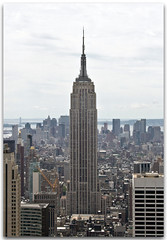
Empire State Building
Manhattan, New York
Shreve, Lamb & Harmon Associates
Chrysler Building
Manhattan, New York, USA
William van Alen
Statue Of Liberty
New York, USA
Frédérick-Auguste Bartholdi
Brooklyn Bridge
Manhattan, New York, USA
John Augustus Roebling
MUY IMPORTANTE!!! VERY IMPORTANT!!!
Deja tu comentario sobre este reportaje al pie de este post donde dice "Publicar un comentario en la entrada"; me será de gran valor para seguir mejorando este sitio web y te contestaré con la mayor brevedad posible... Muchas gracias!
No obstante, si te ha resultado interesante este reportaje y también el Blog en general, por favor, no dudes en hacerte Fan de la página de Fans del Blog de José Miguel Hernández Hernández en Facebook aquí
Nota importante: Una vez que hayas entrado en la página de Fans del Blog en Facebook, con sólo hacer click en el botón de "Me gusta", a partir de ese momento estarás al tanto de todos los nuevos reportajes interesantes relacionados con la Arquitectura y la Ingeniería que aquí se vayan publicando para no perder ningún detalle...
También puedes suscribirte por e-mail (te llegaría un e-mail con el enlace de cada artículo en el mismo momento en que sea publicado), o bien también puedes seguir el Blog a través de Twitter aquí
Nos vemos en el Blog!
Leave a comment on this story at the bottom of this post where it says "Post a comment in the entry", I will prove invaluable to further improve this website and I will answer as soon as possible .. . Thank you very much!
However, if you this story was interesting and the blog in general, please do not hesitate to make Fan Fans of the Blog page José Miguel Hernández Hernández on Facebook here
Very important: Once you enter the page Blog fan of Facebook, simply click on the button Like "From that moment you are aware of all new interesting stories related to the Architecture and Engineering are published here to avoid losing any detail ...
Can also subscribe by e-mail (I would e-mail with a link to each item in the same time it is published), or you can follow through Blog Twitter here
See you at the Blog!
HOME GEOGRAPHY ARCHITECTURE ENGINEERING SKYSCRAPERS
BRIDGES BUILDINGS TOWERS PUBLICATIONS ABOUT ME CONTACT
Copyright © José Miguel Hernández Hernández
Editor, Escritor y Fotógrafo de Arquitectura /
Publisher, Writer and Architectural Photographer
http://www.jmhdezhdez.com/


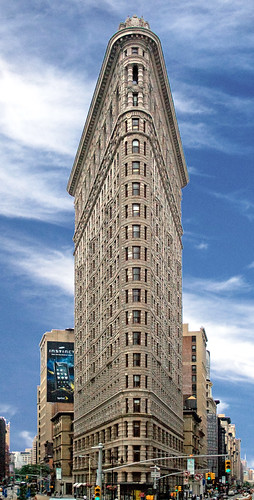
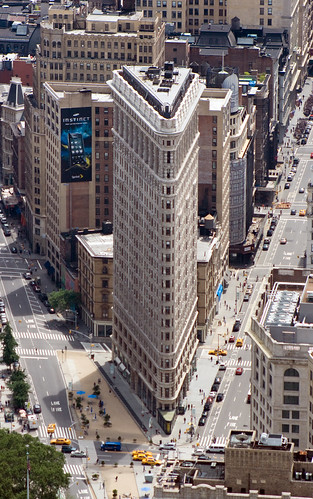




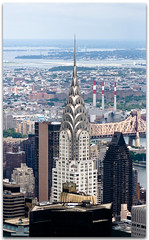




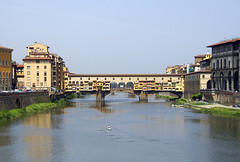




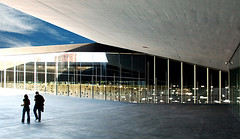


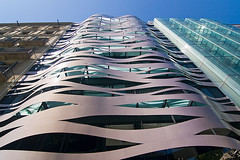



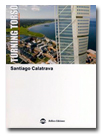

No hay comentarios:
Publicar un comentario